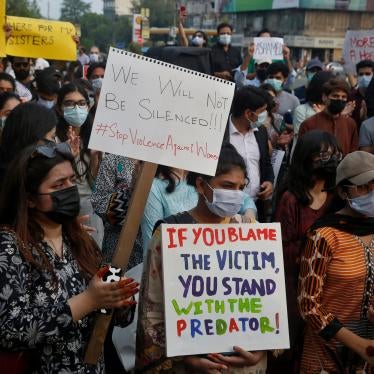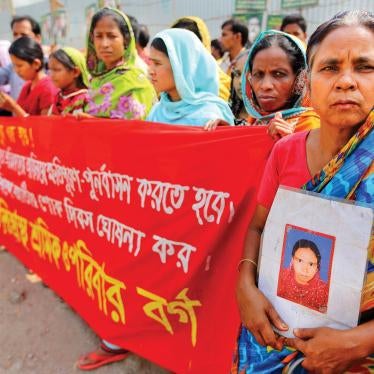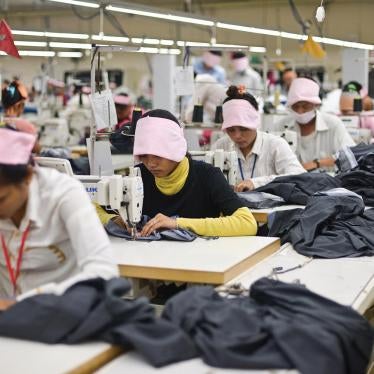Definition of “Power Harassment”
The Ministry of Health, Labour and Welfare’s (MHLW) draft of proposals dated November 18, 2018 (the “draft paper”) defines “power harassment” as “1) based on a superior position in a relationship, 2) words or actions that are beyond necessary and appropriate for regular business conduct that 3) harm the work environment (physical or psychological harm).”[1]
This definition, however, needs further clarity. There should be a clear understanding that physical abuse and psychological abuse cannot be deemed as appropriate business conduct. Some actions inherently are abusive (hitting, shouting, insulting). In other cases, it will need to be determined whether the actions amount to psychological abuse.
The draft paper also proposes that guidelines should set out examples of what constitutes “harming the work environment (inflicting bodily or psychological pain)” in the definition of power harassment including that the standard to determine this should be what “the average worker feels.”
The “average worker feels” test, however, could be too limiting especially if it does not take into account other individual factors like gender, sex, sexual orientation, gender identity, pregnancy, marital status, race, ethnicity, nationality, disability, etc. The MHLW in a publication on sexual harassment noted that the standard employers should take when determining the measures to prevent sexual harassment can differentiate between gender such as what the “average woman worker feels” if it relates to women, or the “average man worker feels” in relation to men.[2] However, it did not stipulate other factors beyond gender as noted above.
Recommendations
The Labour Policy Council should propose:
- that physical abuse and psychological abuse cannot be deemed as appropriate business conduct in any new law; ensure guidelines can further explain where some actions are inherently abusive and other actions need to be assessed to determine whether they amount to abuse.
- expand the factors that employers should take into account when considering the standard “average worker feels” test on assessing measures to prevent and respond to violence and harassment.
Prohibiting and Sanctioning All Forms of Violence and Harassment
We are very concerned and disappointed to see that the draft paper does not prohibit any form of violence and harassment. Instead, it refers to having a later mid to long-term debate on the calls to prohibit sexual and power harassment. This is a missed opportunity.
The draft paper – while it defines “power harassment” and obligates employers to take steps to prevent such harassment – does not prohibit such harassment, nor set out sanctions or redress for victims in law. The Equal Employment Opportunity between Men and Women Law (EEOL) guidelines direct employers to provide a consultation channel for individuals alleging sexual harassment or maternity harassment (harassment over pregnancy, childbirth, childcare, or family leave etc.) and set out examples of appropriate measures to address such harassment. However, the EEOL does not set out what kind of sanctions and redress employers should make available for victims and perpetrators, and it also does not set out any other provision for punishment other than the ministry can public name and shame employers who fail to take measures in line with the law to prevent and respond to sexual harassment (article 30).[3]
Currently, workers can appeal to labor reconciliation committees for settlement in cases of sexual harassment and maternity harassment. In the absence of prohibition and sanctions stipulated in law, individuals can only seek monetary compensation in courts and labor tribunals under the Civil Code, often invoking article 709 (tort (personal injury) damages) but also articles 415 (breach of contract), 710 (compensation for damages other than property), and 715 (employer’s vicarious liability).
Moreover, current proposed measures relate only to sexual harassment and power harassment. Other countries for instance have identified bullying and “mobbing” as forms of harassment at work. Bullying, for instance, refers to an individual who harasses another individual, and can occur between colleagues in an equal power relationship and not just in an unequal power relationship. Mobbing occurs when colleagues group together or gang-up to harass a colleague. Some countries use bullying, mobbing and harassment interchangeably. “Power harassment” as defined by the draft paper can constitute bullying by a superior but may not include cases of harassment between colleagues in an equal relationship or mobbing, which involves a group of colleagues.
Some types of harassment can also relate to various forms of discrimination such as sex, gender,sexual orientation, gender identity, race, ethnicity, nationality, religion, disability, among others. There are specific concerns relating to maternity harassment (in relation to harassment faced by pregnant women or women who take time off for child care) in Japan.
Japan’s Equal Employment Opportunity between Men and Women Law (EEOL) and its Law on Childcare Leave, Caregiver Leave, and Other Measures for the Welfare of Workers Caring for Children or Other Family Members prohibit employers from dismissing or otherwise treating employees disadvantageously by reason of their pregnancy, childbirth, or making application for or taking maternity leave, childcare leave, etc., and require employers to take measures to prevent it.[4] However, it does not deal with maternity harassment by third parties such as clients.
The Labour Policy Council should revise the draft paper to propose prohibiting in law all forms of violence and harassment at work and set out in law a range of sanctions and redress that an employer could take. For instance, sanctions against a perpetrator can include an apology, mandatory training, transfer, suspension, demotion or dismissal, and payment for moral or material damages to the victim. Remedies for workplace violence can include material, punitive, and moral damages, workplace counselling and/or transfer for the victim (if possible and if the victim should so choose) and/or perpetrator, institutional or other changes, reinstatement or payment of wages in the case of constructive dismissal, and workers’ compensation for victims suffering from an occupational illness due to workplace violence.
Sanctions should also be provided against the employer if they are found in breach of their obligations (particularly negligence) such as the imposition of fines or setting out compensation for workers where the employer failed to prevent or respond to harassment.
Recommendations
The Labour Policy Council should:
- propose prohibiting in law all forms of violence and harassment at work and set out a range of sanctions against perpetrators, assistance for complainants, and redress for victims that an employer could take.
- consider identifying other specific forms of harassment, notably bullying, “mobbing,” and harassment related to discrimination including sex, gender, sexual orientation, gender identity, race, ethnicity, nationality, religion, disability, among others.
Definition of the “Workplace”
The draft paper proposes that for “power harassment” the workplace is a place where business is conducted. This should be further clarified to ensure that the workplace is considered broadly to include situations that arise out of, or in the course or connection to work.[5] This could be similar to the guidelines on EEOL in relation to sexual harassment, which has a broad definition of the workplace as wherever work is conducted even if it is outside the physical workplace such as a customer’s home, client’s office, and eating or drinking establishments if meeting with a business partner, etc.[6]
Recommendation
The Labour Policy Council should:
- Propose further defining “workplace” as going beyond the physical workplace to include situations arising out of, or in the course or connection to, employment.
Definition of Perpetrator and Victim
The draft paper proposed providing in guidelines measures that employers could take to publicize and educate relevant parties on “extremely troublesome actions” as being similar to power harassment by clients, business partners, etc. (as in third-party harassment).
This is problematic as if it is provided under guidance this will mean there is no legal obligation on employers to prevent or respond to harassment committed by third parties. The current definition of “power harassment” should instead be clarified to include relationships that are linked to or arising out of work even if it is not a direct employment relationship such as clients, partners, customers, patients and members of the public.
The MHLW has made a public interpretation by notice to consider in the case of sexual harassment that third parties such as business partners, customers, patients, students at school, etc. can also act as sexual harassers.[7] However, the EEOL and its guidelines did not provide specific obligations in its contents relating to preventing and responding to third-party harassment. The draft paper now proposes revising the EEOL guidelines for strengthening and stipulating prevention measures against sexual harassment committed by third parties and against workers outside of the company. However, it fails to explicitly call for stipulating in law on the actual specific steps that employers should take, not just in the form of examples under guidelines, to combat harassment committed by or against third parties.
Recommendations
The Labour Policy Council should:
- Propose setting out in law all measures that employers can take to prevent and respond to all forms of violence and harassment including harassment committed by or against third parties.
- Propose defining harassment by third parties broadly similar to that done by the Ministry of Health, Labour and Welfare in relation to guidance around sexual harassment.
Retaliation Against Complainants
The draft paper proposes legally prohibiting retaliation against individuals who make complaints of sexual harassment from being fired or other disadvantageous treatment. While this is an important measure, there is no similar protection measure provided in relation to complainants of “power harassment” and other forms of harassment.
Recommendation
The Labour Policy Council should:
- Propose legally prohibiting retaliation against individuals who make complaints of all forms of violence and harassment.
[1] “Promotion of women's success and on measures to prevent power harassment (Direction towards compilation),” Ministry of Health, Labour and Welfare, November 19, 2018, (referred hereafter as the “draft paper”) https://www.mhlw.go.jp/content/11909500/000405096.pdf (accessed November 28, 2018).
[2] “Sexual harassment at the workplace,” Ministry of Health, Labour and Welfare, https://www.mhlw.go.jp/content/11900000/000378182.pdf (accessed November 28, 2018).
[3] Guidelines on measures to be taken by employers concerning problems caused by sexual behavior in the workplace, Ministry of Health, Labor and Welfare Notification No. 615 of 2006, revised Notification No. 314 of August 2, 2016, available at https://www.mhlw.go.jp/file/06-Seisakujouhou-11900000-Koyoukintoujidoukateikyoku/0000133451.pdf (accessed November 27, 2018); Guidelines on measures to be taken by employers on the problem caused by the behavior concerning pregnancy, childbirth etc. in the workplace (applied on January 1, 2017), Notification No. 312 of the Ministry of Health, Labor and Welfare in 2016, available at https://www.mhlw.go.jp/file/06-Seisakujouhou-11900000-Koyoukintoujidoukateikyoku/0000133452.pdf (accessed November 27, 2018).
[4] Equal Employment Opportunity Between Men and Women Law, Act No. 113 of July 1, 1972, article 9, and Act on Childcare Leave, Caregiver Leave, and Other Measures for the Welfare of Workers Caring for Children or Other Family Members, Act No. 76 of May 15, 1991.
[5] Several International Labour Organization (ILO) instruments consider the notion of the workplace to go beyond the physical place where work is done to include situations arising out of, or in the course or connection to, employment including commuting to and from work. For instance, ILO Convention No. 155, article 11 refers to “in the course of or in connection with work,” and the ILO Protocol of 2002 to Convention No. 155, article 1, notes that the term “occupational accident” covers an occurrence arising not only in the course of work, but “arising out of” work. The definition proposed for “industrial accidents” in Paragraph 5(a) of ILO Recommendation No. 121 covers any accidents “regardless of their cause, sustained during working hours”, at “any place where the worker would not have been except for his employment.” Paragraphs 5(b) and (c) call for the inclusion of commuting accidents that occur while the worker prepares for work and on the way to and from work.
[6] Guidelines on measures to be taken by employers concerning problems caused by sexual behavior in the workplace, Ministry of Health, Labor and Welfare Notification No. 615, revised August 2, 2008 Notification No. 314, available at https://www.mhlw.go.jp/file/06-Seisakujouhou-11900000-Koyoukintoujidoukateikyoku/0000133451.pdf (accessed November 27, 2018).
[7] "To Employers: you are obligated to implement measures against sexual harassment in the workplace!!,” Ministry of Health, Labor and Welfare, https://www.mhlw.go.jp/file/06-Seisakujouhou-11900000-Koyoukintoujidoukateikyoku/00.pdf (accessed November 27, 2018).








